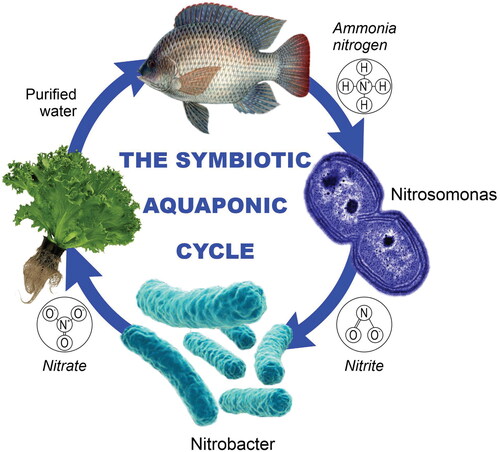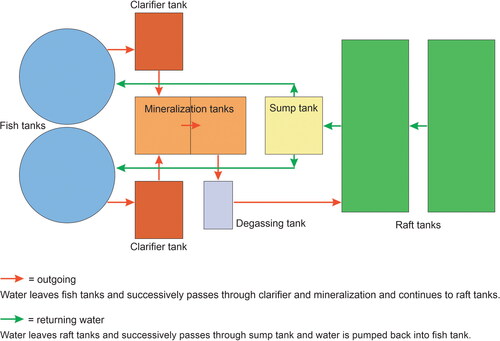Figures & data
Table 1. Most commonly farmed fish in aquaponics.
Table 2. Most commonly grown crops in aquaponics.
Figure 3. Schematic illustration of classical (coupled) and decoupled aquaponics. (a): Classic aquaponic system consisting of RAS (blue: fish tanks, brown: clarifier and mineralization tanks and violet: degassing tank) coupled with hydroponics (green: raft tanks). Water is continuously recirculated from RAS to hydroponics and back to RAS. (b): Decoupled aquaponic system consisting of RAS connected to the hydroponic unit (with an additional tank) via a one-way valve. Water is recirculated separately in each system and is delivered to the hydroponics unit if necessary, but not vice versa [Citation74].
![Figure 3. Schematic illustration of classical (coupled) and decoupled aquaponics. (a): Classic aquaponic system consisting of RAS (blue: fish tanks, brown: clarifier and mineralization tanks and violet: degassing tank) coupled with hydroponics (green: raft tanks). Water is continuously recirculated from RAS to hydroponics and back to RAS. (b): Decoupled aquaponic system consisting of RAS connected to the hydroponic unit (with an additional tank) via a one-way valve. Water is recirculated separately in each system and is delivered to the hydroponics unit if necessary, but not vice versa [Citation74].](/cms/asset/e36bd14c-e73d-4564-a980-2ff3aae9057c/tbeq_a_2074892_f0003_c.jpg)
Data availability statement
Data sharing is not applicable to this article as no new data were created or analyzed in this study. The authors confirm that the data supporting the findings of this study are available within the article.


